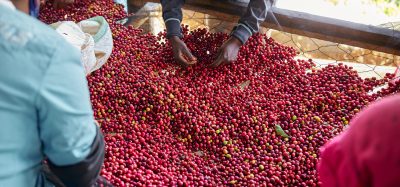Global food prices bounce back in June
- Like
- Digg
- Del
- Tumblr
- VKontakte
- Buffer
- Love This
- Odnoklassniki
- Meneame
- Blogger
- Amazon
- Yahoo Mail
- Gmail
- AOL
- Newsvine
- HackerNews
- Evernote
- MySpace
- Mail.ru
- Viadeo
- Line
- Comments
- Yummly
- SMS
- Viber
- Telegram
- Subscribe
- Skype
- Facebook Messenger
- Kakao
- LiveJournal
- Yammer
- Edgar
- Fintel
- Mix
- Instapaper
- Copy Link
Posted: 2 July 2020 | Sam Mehmet (New Food) | No comments yet
Despite continued pressures from the COVID-19 pandemic, the FAO Food Price Index rose for the first time in 2020 in June, thought to be due to the easing of lockdown restrictions across the globe.


In June 2020, global food commodity prices rose for the first time since the beginning of the year driven by a rebound in vegetable oils, sugar and dairy quotations, according to the Food and Agricultural Organization of the United Nations (FAO). However, in the cereals and meat markets, most prices remained under downward pressure amid market uncertainties posed by the COVID-19 pandemic.
The FAO Food Price Index, which tracks international prices of the most traded food commodities, averaged 93.2 points in June, some 2.4 percent higher than the previous month.
The FAO Vegetable Oil Price Index gained 11.3 percent in June, after declining for four consecutive months. The rebound is said to mainly reflect a sharp rise in palm oil prices due to recovering global import demand, following the easing of COVID-19 related lockdowns in a number of countries, and concerns over possible production setbacks amid prolonged migrant labour shortages. Price quotations of soy, sunflower and rapeseed oils also went up.
The FAO Sugar Price Index climbed 10.6 percent in June from the previous month. The surge in crude oil prices provided strong support to sugar markets, encouraging Brazil’s sugar mills to use more sugarcane supplies to produce ethanol instead of sugar, thereby affecting sugar export availabilities and prices.
The FAO Dairy Price Index rose by four percent from May, marking the first increase after four months of successive declines. Renewed import demand for spot supplies, especially from the Middle East and East Asia, coupled with seasonally declining supplies in Europe and limited availability of uncommitted supplies in Oceania, underpinned the recent price increases.
The FAO Cereal Price Index declined 0.6 percent from May. Downward pressure on wheat prices in June was in part due to new harvests in the northern hemisphere and improved production prospects in a number of major exporting countries, including the Black Sea region.
The FAO Meat Price Index fell 0.6 percent from May, averaging six percent below its June 2019 value. Bovine meat and poultry price quotations fell, largely due to increased export availabilities in major producing regions, whereas pig meat prices registered a small increase, mostly in Europe, on expectation of the further easing of COVID-19 market restrictions.
Record global cereal production to boost stocks
World cereal production is predicted to reach a new record level of 2,790 million tonnes in 2020 – up 9.3 million tonnes from the May forecast – surpassing the record-high registered in 2019 by as much as three percent, according to FAO’s Cereal Supply and Demand Brief.
The forecast of world coarse grains production in 2020 has also been revised up to 1,519 million tonnes, up 5.7 million tonnes from the previous month, reflecting expectations of larger outputs of barley in Australia, the EU and Turkey.
FAO’s global rice production forecast for 2020 is now pegged at 509.2 million tonnes, 400,000 tonnes above June’s figure, primarily reflecting improved prospects for South American countries, where conducive weather raised yield expectations to all time-highs.
World cereal utilisation in the year ahead is forecast to rise to 2,735 million tonnes – 1.6 percent up from the previous month’s forecast, mostly driven by an upturn in feed and industrial uses of coarse grains compared to earlier expectations. World rice utilisation is also predicted to reach a fresh peak of 510.4 million tonnes in 2020/21, 1.6 percent up from June, based on expanding food use.
Reflecting new production and consumption forecasts, FAO now expects world cereal stocks by the end of seasons in 2021 to reach 929 million tonnes, representing a robust year-on-year expansion of six percent. This would reportedly drive the global cereal stock-to-use ratio in 2020/21 to a twenty-year high of 33 percent, highlighting the ‘comfortable’ global supply prospects in the new season.
Related topics
Related organisations
Food and Agricultural Organization of the United Nations (FAO)








